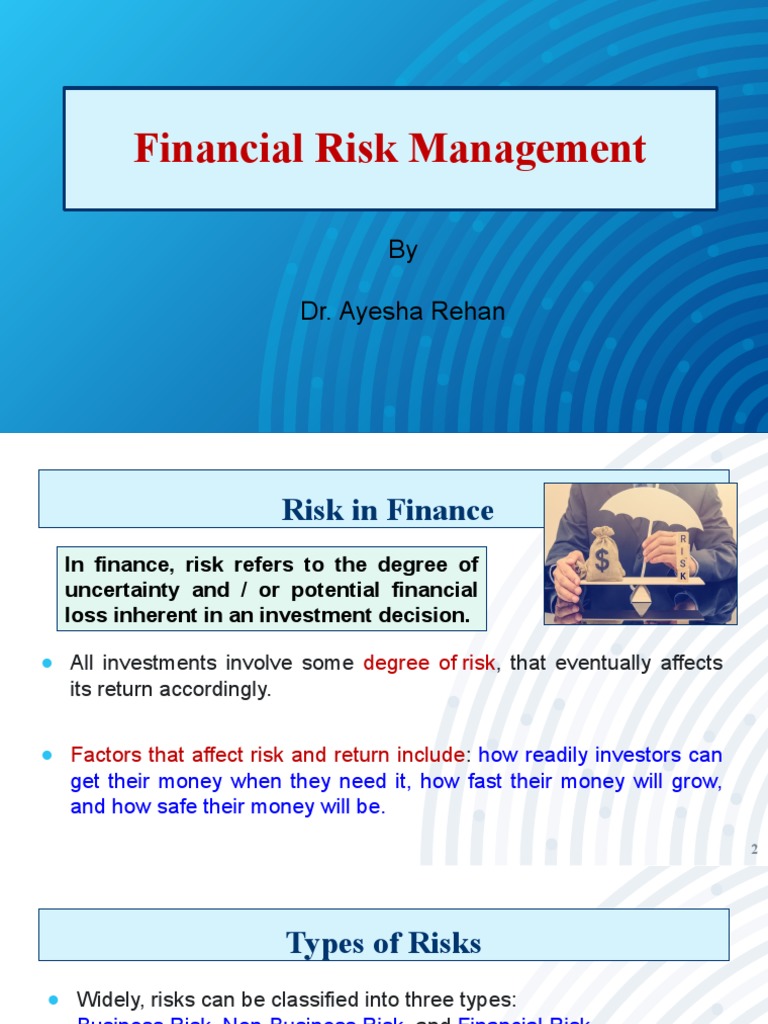In the realm of finance, the fluctuations of markets and the unpredictability of economic conditions necessitate robust strategies to safeguard investments, revenues, and overall corporate health. Risk Management in Finance emerges as a critical discipline aimed at identifying, analyzing, and mitigating potential risks that can adversely impact financial performance. Understanding this crucial aspect enables firms to navigate the complexities of today’s financial landscape more effectively.
Understanding Risk Management in Finance
At its core, Risk Management in Finance involves not just the prevention of losses but also the identification of opportunities. When organizations cultivate a culture that embraces rigorous risk assessment, they position themselves to not only avert potential pitfalls but also to capitalize on favorable conditions. This dual approach fosters a resilient financial structure capable of withstanding the shocks of market volatility.
To navigate the complexities of financial risk management effectively, it is imperative to distinguish between different types of risks. These can be broadly categorized into various segments such as market risk, credit risk, liquidity risk, operational risk, and legal risk. Each of these categories presents distinct challenges, and understanding them paves the way for tailored risk management strategies that are essential for safeguarding a firm’s financial assets.
Effective Strategies in Risk Management in Finance
The framework for effective Risk Management in Finance involves multiple steps, beginning with risk identification. Financial institutions and businesses must conduct thorough assessments to uncover potential risks. This may include analyzing market trends, evaluating the political climate, assessing economic indicators, and reviewing internal operations.
Risk Assessment Techniques
Once risks are identified, risk assessment techniques can be employed. This step often includes quantifying risks through statistical methods and financial modeling. By engaging in quantitative analysis, organizations can understand the probability of adverse events and their potential financial consequences.
Another essential aspect is the risk prioritization process. Not all risks are created equal. By evaluating the likelihood and impact of each risk, organizations can prioritize which risks require immediate attention and which can be monitored over time. This ensures that resources are allocated efficiently to manage the most critical threats.
The Role of Risk Mitigation
Mitigation strategies are at the heart of effective Risk Management in Finance. Organizations can employ various risk mitigation techniques, including diversification of investments and securing comprehensive insurance policies. For instance, diversifying a financial portfolio can significantly reduce exposure to any single asset class, thus minimizing risk. Similarly, insurance can protect against unforeseen events that can lead to substantial financial losses.
Implementing Risk Management Frameworks
To embed Risk Management in Finance into corporate culture, businesses often adopt formalized frameworks and methodologies. These frameworks can range from organization-wide risk management policies to specific procedures for distinct departments. Not only do these practices standardize protocols for managing risks, but they also enhance accountability and ensure that all employees understand their role in the risk management process.
Learn more about Financial Risk Management
This image illustrates some key strategies for managing financial risks, reflecting the various approaches firms may take to secure their financial operations.
The Importance of Risk Monitoring
An effective Risk Management in Finance system also encompasses continuous monitoring of financial risks. As markets evolve, so do potential risks, making it vital for organizations to remain agile and responsive. By integrating technology and data analytics into their risk management processes, organizations can enhance their ability to identify emerging risks early. Regular audits and reviews of risk management practices further ensure that firms remain compliant with regulations while positioning themselves favorably in their respective markets.
Engaging Stakeholders in Risk Management in Finance
Successfully implementing risk management strategies also hinges on engaging all stakeholders, from executives to employees. By fostering a culture of transparency around financial risks and empowering employees to voice concerns or report potential risk situations, organizations can create a proactive risk management environment. Training and awareness programs tailored to educating staff about the importance of risk management can further integrate this culture into an organization’s DNA.
Leveraging Technology for Risk Management
The digital age has ushered in an array of technologies that can significantly enhance the efficacy of Risk Management in Finance. Advanced analytics, artificial intelligence, and machine learning can unveil deeper insights into market behavior and risk exposure. These technological advancements enable firms to perform scenario analyses, allowing them to simulate various financial conditions and their potential impacts, thus transforming how risks are assessed and managed.
Summarizing Key Takeaways in Risk Management in Finance
In summary, the essence of Risk Management in Finance lies in its comprehensive approach to mitigating potential financial pitfalls while recognizing opportunities for growth. By embracing various strategies, assessing risks, implementing effective frameworks, and leveraging technology, organizations can foster a resilient financial environment conducive to long-term success.
In a landscape marked by uncertainty and rapid change, the importance of Risk Management in Finance cannot be overstated. As we venture forward, an organization’s ability to adapt and innovate in its risk management approach may very well define its trajectory amidst turbulence.
By recognizing the critical role that vigilant risk oversight plays, companies can not only protect their current assets but also position themselves to seize opportunities spawned by shifting market dynamics. Engaging all levels of an organization in this endeavor catalyzes a united front against risk and reinforces the foundation of a resilient financial operation.
Ultimately, the future of finance includes an unwavering commitment to risk management—one that invests in both protective measures and ongoing education, all while fostering a climate where informed decision-making thrives. Achieving excellence in Risk Management in Finance goes beyond basic compliance. It requires a culture of proactive engagement, continuous improvement, and a strategic vision that embraces the complexities of the financial world.
The journey towards effective Risk Management in Finance starts today, and every organization has the opportunity to lead in this vital aspect of financial stewardship. It is a journey where vigilance and adaptability are the keys to unlocking a future defined by resilience and opportunity.



